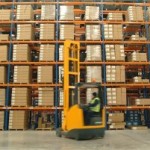It’s happened to many retailers: Their bright and shiny apps are up and ready to roll, yet no one uses them. Worse, very few customers even bother to download the apps. The challenge is mighty: Design an app that is unique, offers a differentiated experience and provides the customer something he or she finds useful. Succeed, and the consumer will return to the app. Fail and you risk losing that customer to the competition.

Mobile apps and shopping sites offer a great deal of convenience to consumers, but retailers should keep the customer experience in mind when implementing their mobile options.
We know why apps fail — customer dissatisfaction — so the question is: What makes an app a winner? Forester Research recently released a survey that found three main reasons for success: Convenience, speed and personalized experience.
Convenience. Too often, consumers are turned off by apps that are cumbersome. They are difficult to use or just not intuitive enough. Ease of use is a top consumer requirement. Forty percent of the Forester respondents said app features such as stored settings make their lives easier. In addition, using an app should be a different and unique experience than using a Website, or else shoppers won’t be bothered. Making the app a tool for improving in-store shopping is an imperative.
Speed. Along with being differentiated from the Website, the app must be fast. Apps that take too long to download information are worthless. The retailer should also offer free Wi-fi to facilitate the process in-store. Outside of the store, a shopper should be able to quickly check store locations, opening and closing times, product reviews and inventory.
Personalization. The ultimate retailer app provides shoppers a one-of-a-kind experience that focuses on value for users, which results in loyalty for retailers. Personalized content, such as purchase suggestions, can be curated by analyzing purchase and app interaction history, data based on a user’s location, or factors including time of day or weather. For some retailers, personalization is based on an existing loyalty program.
Finally, to know a good app is to love it: The Forester survey reported that consumers who are weekly users of retailer apps are more likely to say that stored settings, benefits for using the apps and personalized content were reasons they use apps rather than websites, compared to less frequent app users. Once a retailer unlocks the key to an efficient smartphone app, customers will be loyal to it — which means happy, repeat customers.








